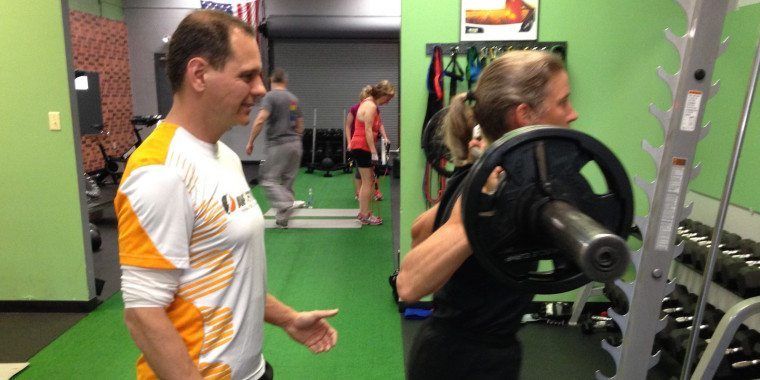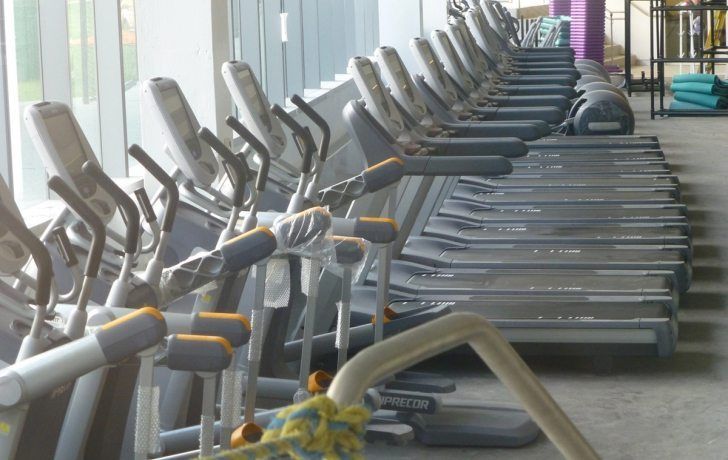The month of January generally brings with it a time of change for many people.
Some make a return to the gym for the first time in months, or hire a personal trainer for the first time. Still others make their initial foray into the world of fitness.
If you find yourself in either of these categories, congratulations! You have now taken the first step on a journey to better health.
To help you navigate your way to a better you, here are 10 fitness terms you should familiarize yourself with before your next visit to the gym.
Anaerobic vs. Aerobic
In basic terms, anaerobic means without oxygen and aerobic means with oxygen. An anaerobic exercise will be done at almost your maximum effort, but your muscles will not require oxygen, meaning it can’t be done for a long period of time because
A lower-intensity, or aerobic, activity requires oxygen, meaning you can perform the activity for a longer time and, in turn, burn more fat.
Bodybuilding movements are typically anaerobic, whereas endurance activities are aerobic in nature.
Concentric vs. Eccentric
When you lift a weight against gravity, a muscle contraction takes place around your joints. For example, when you do a biceps curl, the biceps muscle contracts to lift the weight. This action is called a concentric, or positive, contraction.
As you lower the weight, the biceps is being stretched or lengthened, which is known as the eccentric (or negative) contraction. It’s important to note that strength isn’t measured only by how much you can lift (the concentric motion), but also controlling the eccentric, or downward, motion.
Resistance training
Resistance training is a form of physical activity that is designed to improve muscular fitness by exercising a muscle or a muscle group against external resistance. The training can be accomplished with traditional free weights and dumbbells, weight machines, body weight, elastic tubing, medicine balls,such as the use of rubber bands or straps.
Hypertrophy
Hypertrophy is what occurs when you build muscle through the process of enlarging individual muscle fibers. Those fibers grow stronger through protein synthesis, in which the fibers are damaged by resistance training but then rebuild themselves by becoming stronger and larger in response to the training.
In general, to build muscle you should choose a weight that you can perform eight to 12 reps per set, while maintaining proper form for three to five sets.
Unilateral vs. Bilateral
When you train just one side of your body at a time you are performing unilateral training. Unilateral training typically allows you to achieve a slightly longer range of motion and greater intensity. When done with dumbbells, unilateral training requires greater stabilizer activity, as the weight is more difficult to control.
While using traditional bilateral training movements (think a traditional barbell bench press using both arms to press the weight) are still very essential in making up a complete strength and conditioning program, it is important to incorporate unilateral training movements as well.
HIIT
High intensity interval training involves repeated bouts of high intensity effort followed by varied recovery times.
The workout periods can range from five seconds to eight minutes long, and are performed at 80 to 95 percent of a person’s estimated maximum heart rate. The recovery periods may last as long as the workout periods, and are usually performed at 40 to 50 percent of the maximal heart rate. Workouts continue, alternating work and relief periods, for 20 to 60 minutes.
Tabata
Tabata training is a type of high intensity interval training that follows a specific format where you perform an exercise for 20 seconds, followed by 10 seconds of rest, for eight rounds (a total of four minutes).
Eating Clean
One of the fundamentals of performance nutrition, eating clean means choosing healthy, natural, and minimally processed foods to fuel your body.
Wearable technology
Introduced just a few years ago, wearable technology includes fitness trackers, smart watches, heart rate monitors, and GPS tracking devices, such as the MyZone system used at AMP Fitness.
Core training
Core training stresses strength and conditioning of the stabilizing muscles of the abdomen, thorax and back and typically includes exercises of the hips, lower back, and abdomen, all of which provide support for the spine and thorax. Core training often uses stabilizing devices such as exercise balls, BOSU balls, wobble boards, and foam rollers.












